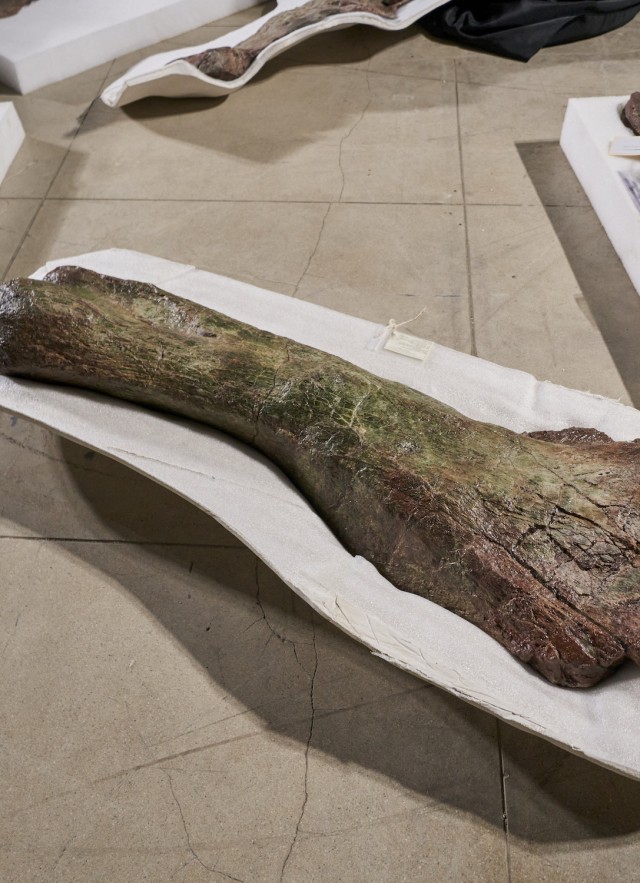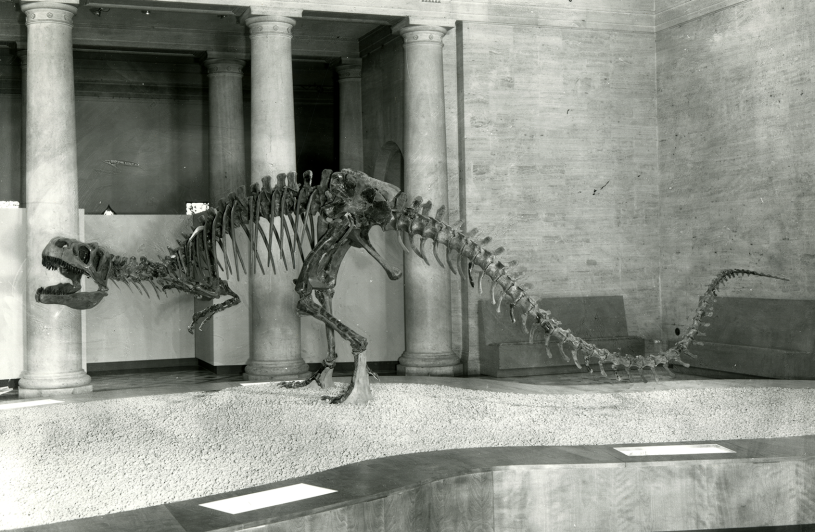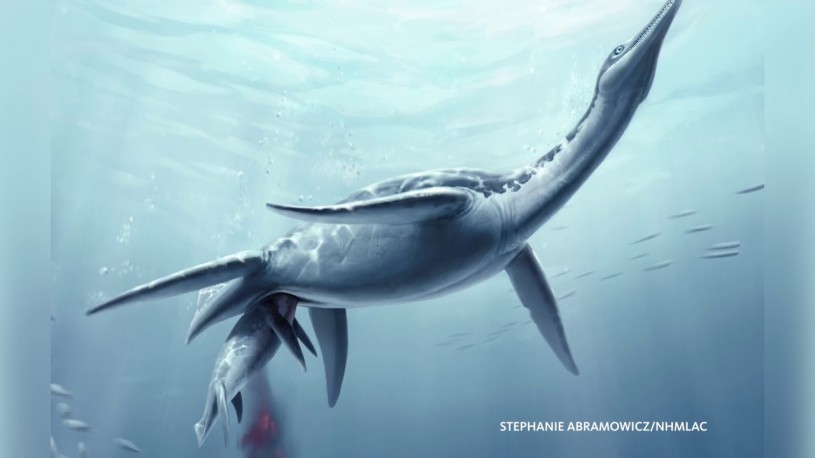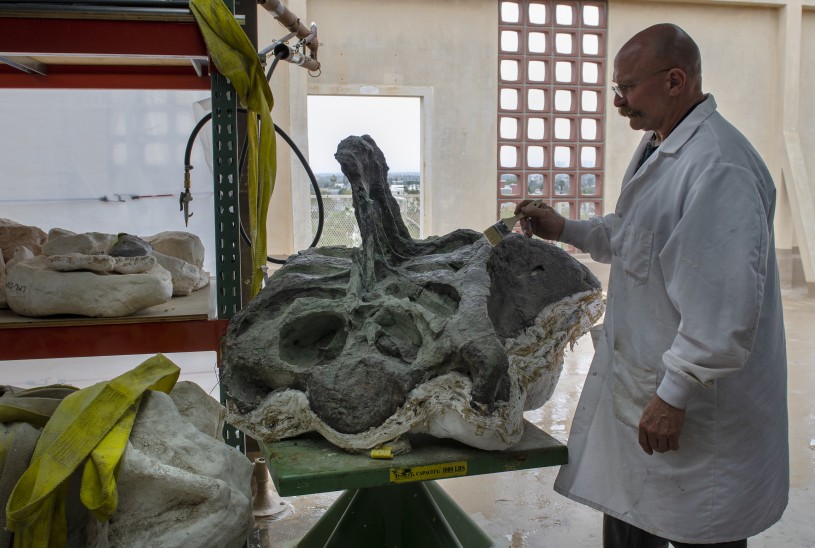The museum will be closed Thursday, January 1 for New Year's Day. We will reopen Friday, January 2.
Wonder Is in Our Bones
How giant fossils expand the dimensions of our imagination

Published May 1, 2024
The NHM Commons—the Museum’s new wing and community hub—will welcome visitors this Fall with, among other wonders, the newest and biggest fossil Angeleno: Gnatalie. At more than 70 feet long, Gnatalie the long-necked dinosaur will make an impression on visitors from Los Angeles and around the world, for the first time bringing NHM’s storied fossils to the public with or without a ticket. The biggest specimen on display at the Museum will also be free to view for anyone.

“When someone sees the skeleton of a huge dinosaur, they know that this creature once walked the Earth. It’s awe-inspiring, an immediate reminder that there’s a much bigger world outside of our own experience,” says Dr. Matt Davis, Exhibition Developer and Paleontologist at the Museum.
Viewing fossils stitches us into the great tapestry of life on Earth, threading hundreds of millions of years to bring animals of unimaginable proportions into human terms. Take the giant marine reptiles that ruled the seas during the Age of Dinosaurs. It would be easy to picture plesiosaurs as ancient sea monsters, but specimens, like Polly in NHM’s Dinosaur Hall, reveal these incredible extinct giants for what they were: living animals. In the case of Polly, the fossil reveals the surprising fact that these ancient marine creatures gave live birth.

“In a world in which what’s real and what’s fabricated is often hard to distinguish, a colossal skeleton of real dinosaur bones connects us with life around us and the many different creatures that really lived before our time,” says Dr. Luis Chiappe, Senior Vice President of Research & Collections and Gretchen Augustyn Director of the Dinosaur Institute.

Every fossil on display at NHM may help tell the story of the living animal (or plant or other organism)l, but the tint of Gnatalie’s bones highlights the incredible geologic forces that made it possible.

Unique among complete fossil dinosaurs around the world, Gnatalie’s bones come in a distinct shade of green, a visual testament to the geologic drama necessary for bones to become fossils. The mineral celadonite seeped in over millions of years, replacing earlier minerals to create a stunning visible narrative of the fossilization process. Only intense volcanic activity could produce enough heat for the celadonite to replace the previous minerals so completely and create this rare and beautiful hue.
Gnatalie will join the ranks of the other massive fossils already on display at NHM, telling the story of Earth’s massive changes unlike anything else. They reflect the vastness of time and the near-limitless ability for life to grow and change beyond our imaginations, both humbling and inspiring us.